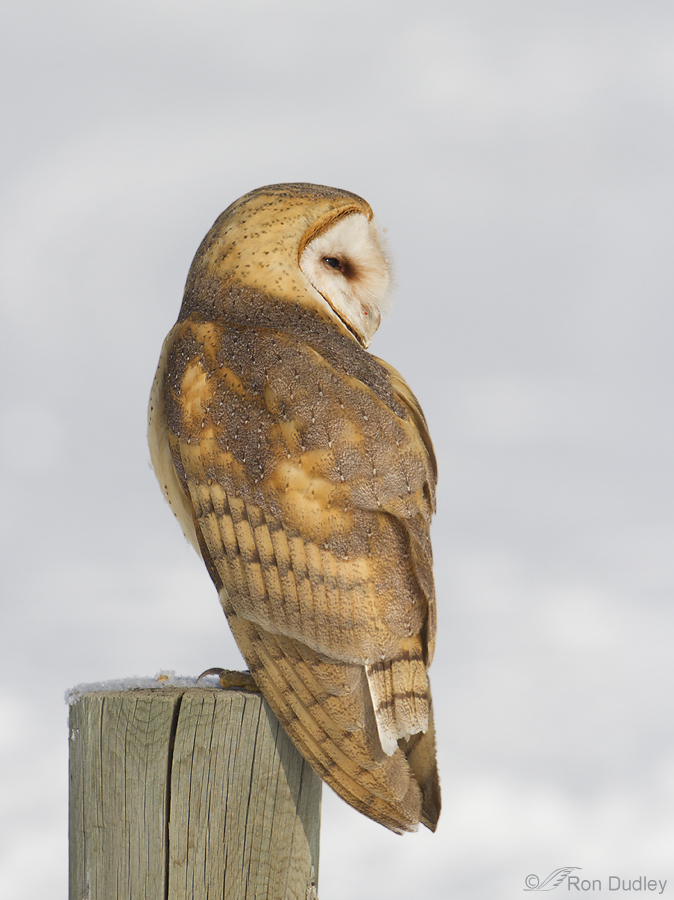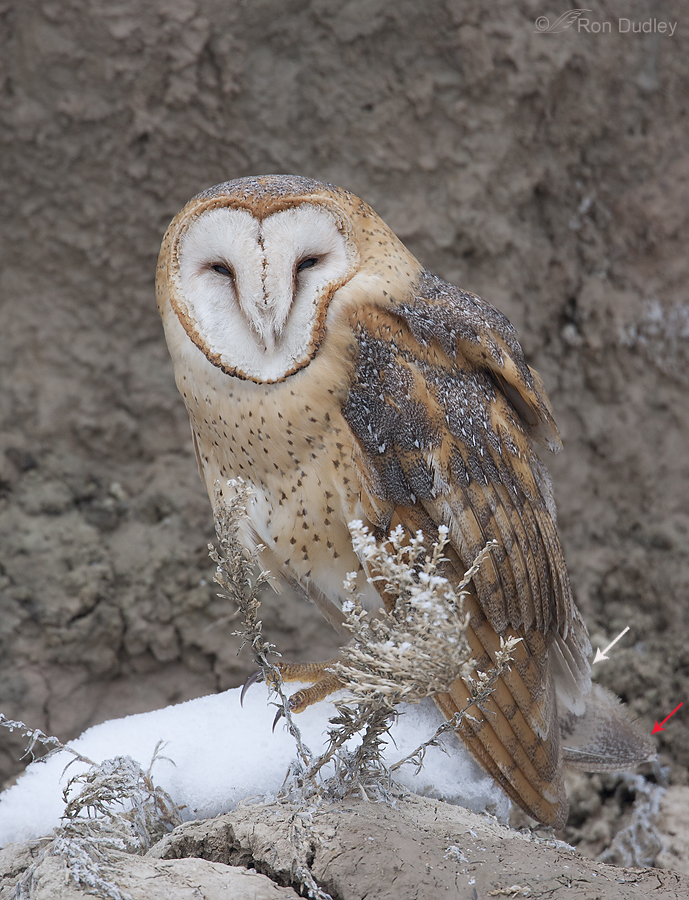I learned something this morning. It will likely seem inconsequential to others but it was sort of a big deal for me.

1/3200, f/6.3, ISO 500, 500 f/4, natural light, not baited, set up or called in
A few minutes ago, while processing this recent Barn Owl image, I was once again struck by how short and stubby the square tail of this species is, especially when compared to the length of the wings. And then some faint memory from long ago popped into my head.
Bingo! Now it all made sense.

1/320, f/7.1, ISO 500, 500 f/4, 1.4 tc, natural light, not baited, set up or called in
By coincidence, exactly 5 years ago today I posted this image to an online nature photography critique forum (Nature Photographers Network or NPN). At the time I was just becoming serious about my bird photography and I took the critiques I got on that forum to heart – trying to learn from my mistakes and improve my skills.
In the version of the photo I submitted to NPN I didn’t recognize the “structure” marked with the red arrow as being part of the bird so I had cropped the image in such a manner that I “clipped” the tip of that structure. The critiques I got from the members of the forum “dinged” me for it, and rightfully so. They all said that I had clipped the tail and in my inexperience I assumed they were right and went on with my life. But I felt pretty silly to have made such a stupid mistake for the “whole world” to see.
But this morning I realized that they were partly incorrect. It wasn’t the tail I had clipped (marked here with a white arrow), but the right wing-tip instead. It had been bent upwards slightly by the snowy perch so that we see the underside of it, which is why I hadn’t recognized it as being the wing-tip (combined with the fact that at the time I didn’t realize just how short the tail of a Barn Owl actually was).
Much ado about nothing, I know. But for me it’s another step in the learning process – about my subjects and about paying attention to details.
Ron


Good to know about the 50D and the noise issue. I’ve been looking to purchase a camera and have been looking at the 50D. Thanks. I’m using a wide angle PowerShot because it fits in the pocket when I go walking every morning. Blessings, Janet
Just discovered your site (I guess through 10,000 birds) – great stuff, lots for me to learn. You don’t use Mia McPherson as a pseudonym, do you? Same Barn Owl on onthewingphotography.com.
(I did note you referring to 2 cameras clicking on the “parallax” photos (fantastic!))
Welcome, Hugh. Your comment brought a smile to my face. Yes, Mia is my constant shooting companion.
Ron,
Your shots are spectacular! I too shoot with Canon cameras, primarily a 50D. I have always hesitated to use high ISO settings because of the “noise” I encounter in my shots. But it’s obvious that you have mastered the technique without the noise and I need to go back to the drawing board. Thanks for a delightful web site and great information in your blog.
I haven’t really mastered the noise issue, Karen. Still have to be careful…
Your subject is beautiful! Technically expert photos too!!!!
Thank you, Nicole.
Well, I took my first bird images six months ago and absolutely every trip and every image has been a reminder of how steep my learning curve is! I have to thank you for your website as it’s truly been an inspiration as to the possibilities of what can be done.
Thank you for your keen insight, to your own photography, which has helped a lot of us improve I suspect!
–Wally
I appreciate your thoughtful comment, Wally
Excellent observations, once again! As I mull about Barn Owl’s specialized adaptations and hunting style, it makes sense. These guys pinpoint exactly where they will pounce to surprise their prey, and go directly there. Compare to a Cooper’s Hawk, for instance. Their very long tail is used as a rudder to allow them to turn on a dime, to give chase and overtake their dinner.
Thank you for giving me reason to think it through this morning. Dang, I wish I could fly! I can almost feel the movement of every feather.
I’m glad you shared your thinking process here, Mikal. I suspect you’re right.
Sometimes it is so hard to see something like that–after all, they’re designed to blend in with the background and that strategy is certainly working well here with this part of the bird. Thank you for pointing out to us that we should make sure we really see what’s happening.
Hopefully I won’t make a similar mistake again, Sharon.
good blog Ron; certainly not inconsequential
Thanks, Roy.